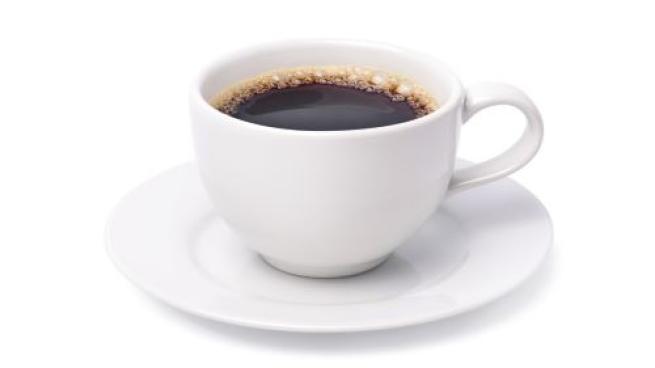The Coffee Sector Reflects Marketplace Trends

“The better-for-you designation sometimes refers to organic, but our definition of better-for-you entails being better for the producers of the coffee, better for the environment and how it’s produced, and better in terms of quality,” explains Matt Smith, Westrock’s EVP of global supply chain, quality and sustainability. “We are seeing excellent demand growth in these areas.”
Westrock is also seeing a bump for its private label coffees and teas among grocers. “I think we’ll see that demand accelerate, especially because the upcharge of better-for-you is very minimal in terms of the brand protection it provides,” Smith notes.
In addition to embracing responsibly sourced coffee products from international producers, grocers – especially smaller and independent stores – often differentiate themselves by carrying coffees from local manufacturers. E-commerce businesses have delved into this area, too; FreshDirect, for example, recently added premium coffee from a local Bronx, N.Y., brand, Don Carvajal Café.
Choices for Convenience
Retailers can also provide solutions for their coffee-drinking consumers by offering convenience-oriented products, increasingly with a premium profile.
Ready-to-drink (RTD) coffee products appeal to shoppers who want a quick pick-me-up or don’t feel like making their own coffee beverages at home. Shelf-stable products in bottles and cartons have been effectively merchandised alongside whole-bean and ground coffee in the coffee aisle, and cross-merchandised in grab-and-go refrigerated cases closer to checkout areas and in the foodservice perimeter.
In addition to traditional RTD coffee products like iced coffee, flavored brews and espresso-inspired drinks, this slice of the market has seen some newer entries with functional properties. One example is Soylent’s Café Mocha, made with plant protein.
One of the original convenient forms of coffee, of course, is instant coffee. Although some instant-coffee mainstays have retained loyal followings, there has been a premiumization of instant coffee over the past several years. Following its Via instant-coffee packs, for example, the Starbucks grocery brand added a premium instant-coffee product, made with 100% arabica beans. Meanwhile, the venerable Nescafé instant-coffee brand continues to expand its line, with new higher-end varieties like Clasico Brazil Instant Coffee.
As cold brew has taken off, so have instant and near-instant cold brew products. Examples include a cold-brew coffee pack from Dunkin’s grocery brand, and cold-brew concentrates from manufacturers like Chamaeleon Organic and Starbucks.
At Westrock, Smith agrees that convenience, while evolving in the face of the pandemic, is a strong sales driver. “We continue to see growth and a focus on single-serve and ready-to-serve product lines, including cold brew,” he says. “Convenience and convenience at home are growing trends – these things will be part of grocery shelves in the future.”
Despite some concerns in recent years about package waste, convenient coffee pods and capsules also take up a good part of the center store coffee area. In addition to new roasts and flavor varieties from brands that offer such products, this segment includes pods considered eco-friendlier, like Gourmesso’s 100% compostable pods and capsules, carried by retailers such as Walmart and Amazon.
Providing for Palates
Grocers can cater to consumers’ taste for rich, robust flavor – evident in other product categories like chocolate and beer – by offering darker and fuller-bodied varieties of coffee beans, grinds, pods, capsules and instant-coffee products. Longtime brand Folgers, for its part, offers Noir and Black Silk lines for consumers who gravitate toward dark-roasted, complex coffees; these varieties come in ground coffee, pod and single-serve stick formats. Another brand specializing in dark coffee is Death Wish Coffee, which touts its Arabica and Robusta bean blend as “the world’s strongest coffee,” with twice the strength of the average cup.
On the other end of the spectrum, grocers can also meet the preferences of coffee consumers who want or need something less bold. Folgers, for instance, offers smooth coffee options described as “stomach friendly,” targeted to those who like coffee but want to drink something mild and gentle.
In this pumpkin spice latte season that has given rise to the culturally hip “PSL” acronym, seasonal coffee varieties and displays can draw in shoppers who get excited about limited-time offerings, The Starbucks grocery brand, for its part, expanded its fall-themed retail offerings this year, supporting the line with point-of-sale signage and materials.
Heading into the holidays, end caps and other displays with seasonal flavors of coffees can grab the attention of consumers who have begun entertaining family and small groups of friends, following a mostly at-home 2020 holiday.
Meanwhile, aligning with the “never bored” mantra when it comes to adventurous flavor and today’s consumers, coffee brands continue to experiment with different flavor combinations to give a fresh jolt to the category. Case in point: Dunkin’s recently introduced ground coffee additions of Caramel Me Crazy, Cinnamania and Chocoholic Pancake.
progressivegrocer.com

